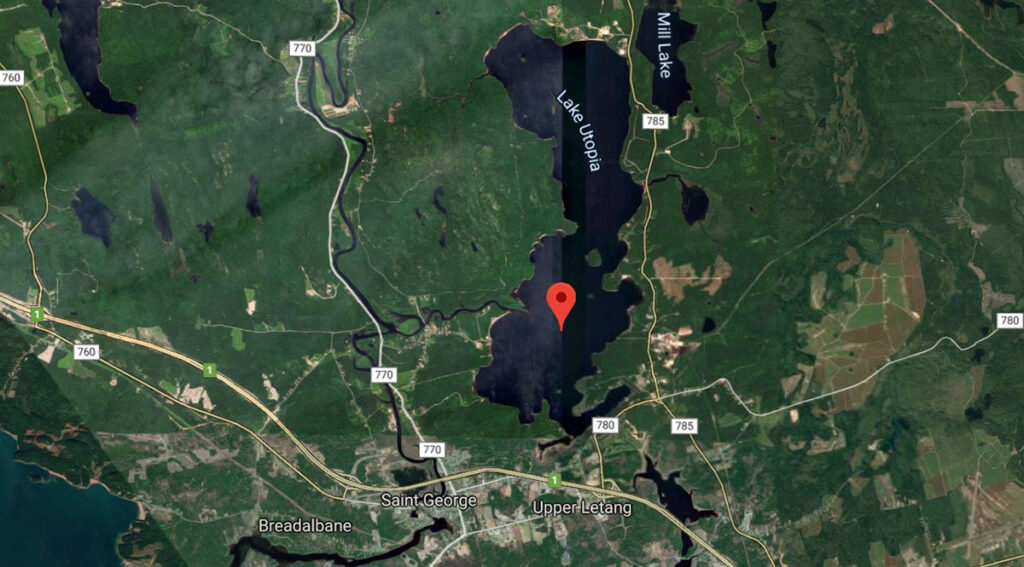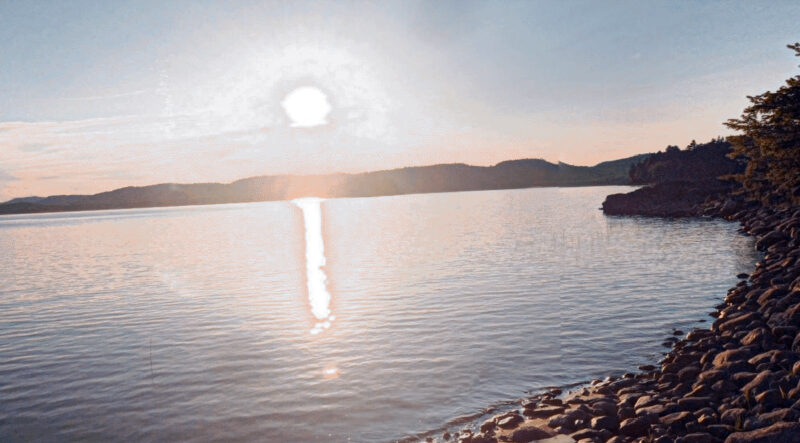Deep in the south of New Brunswick, 40 minutes from the Canada-U.S. border, you can veer off the Bay of Fundy into Passamaquoddy Bay.
From there you can swim into the Magaguadavic River, swim past Silver Island, past the Magaguadavic Basin, under a few single-lane truss bridges, and into the canal that will eventually lead you to Lake Utopia.
Before the construction of aquaculture projects like dams and fish ladders, and even before the birth of the Town of Saint George, the Maliseet First Nations spoke of a large creature that chased two canoers from one end of the lake to the other.
Cryptozoologist Loren Coleman has even included the sea monster, called Old Ned, in his book with Patrick Huyghe, The Field Guide to Lake Monsters, Sea Serpents and Other Mystery Denizens of the Deep.
But for local resident Jack Kelson, 78, it’s more than just a few words on a printed leaf of paper. It’s a mystery that still has him puzzled as to what he saw in 1953.
A mere teenager at the time, he was fishing with his father Rupert Kelson just off Cannonball Island on Lake Utopia when they saw a disturbance break the water.
“My father said it was a sea monster. It was black, and it had a tail that looked like a dragon’s,” he recalled, in an April phone conversation. “I got pretty excited at 13.”
He was so excited, in fact, he lost the oar off the side of the boat. His father’s quick thinking, led him to cast a fishing line out to catch the errant boat prop.
“I’ve never seen it again, but I know several people have seen it twice,”
His father would later explain that he suspected it to be a group of eels during mating season in April. But his grandfather, Will Hatt, was convinced it was a sea monster.
“It’s all I ever heard when I was a kid,” he said. “The older people always talked about the Lake Utopia sea monster.”
Fauna found in the lake consist of smallmouth bass, trout, perch and the aforementioned river eels. It’s also home to an at-risk species, the rainbow smelt.
It’s illegal to fish for the smelt is listed as threatened under the Species at Risk Act. But fishermen are still allowed to angle for other species. There are also fish hatcheries in Blacks Harbour and the fish

The Lake Utopia estuary from above.
St. George town manager, and Charlotte County historian, Jason Gaudet, acknowledged the history of the Lake Utopia sea
“We’ve had a few people talk about things but it pretty much died off in the early ’90s,” he said. “Certainly, people who were well known in the community let be known that they saw something.”
Since the aquaculture infrastructure was built the sightings died down. The fish ladder was constructed in the 1980s. Previous to that, anything travelling through the estuary would have to go through the dam and canals.
There have been thoughts to compile the stories in the local news to help get an idea of the timelines, but
“It has certainly crossed my mind that we do something, but because there hasn’t been a whole lot of interest as until just recently, we haven’t really compiled anything.”
The last sighting on record was made by Roger and Lois Wilcox while they were canoeing by Cannonball Island in 1996.
“There is a lot of oral history. My great grandfather lived on the lake and swore there was something out there.”
Gaudet lives on the Canal side of Lake Utopia as opposed to Utopia Centre and has lived there since 2002.
“Those who have seen it swore they have seen it,” he said. “There are no pictures, like a Loch Ness head,” he added.
But as noted, major changes to the geography has limited the number of species that have entered the lake via the canals.

